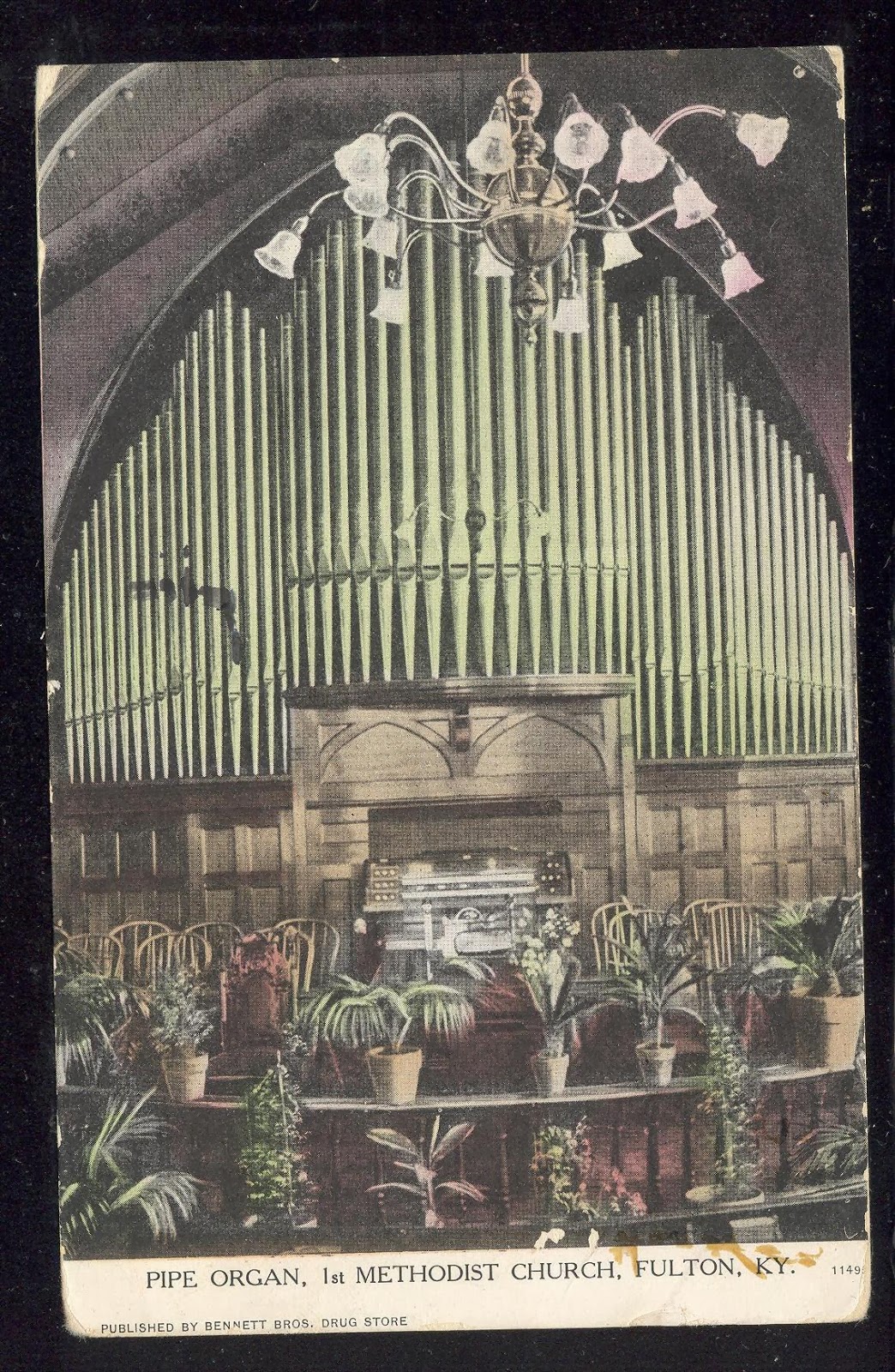Saturday, January 18, 2014
Salisbury Cathedral
This card shows the chancel area in Salisbury Cathedral, including the organ, looking toward the west end of the building. The instrument was built by Father Willis in 1877. It remains in much the same state as when installed. There is a pdf document on the page linked above that gives a complete specification of the organ.
Labels:
03,
B&W,
chancel area,
Father Willis,
mint,
Salisbury,
UK
Emporia, KS: First ME Church
This card shows the "4800 pipe organ" in First Methodist Episcopal Church in Emporia, Kansas. Also in view are the first few pews in the nave and the chancel platform. There is no further information on the instrument. The website for the current First United Methodist Church in Emporia doesn't give any information about the music program nor organ. Their Facebook page shows a modern looking facility, so I doubt anything in the postcard remains, unless the old building (and organ) were sold to another church to occupy and use. The stenciling on the facade pipes is quite lovely. In the new building, the chancel image shows grillwork on the right side, which suggests there may be a pipe organ there, but again, no information at this time.
Versailles: Chapel
The first organ in the chapel at Versailles was a Clicquot, installed in 1711. Cavaille-Coll significantly altered the instrument in 1873. That instrument was removed in 1936 and a new instrument was installed by Victor Gonzales. Finally, in 1995 another completely new instrument was installed by Jean-Loup Boisseau and Bertrand Cattiaux, intended to be a faithful replication of the style of Clicquot. This site provided a helpful summary of the organ's history; this one provides even more detail in French. The postcard above is unused, and black/white. It shows the nave and organ from floor level. I have a second card, below, which shows the same contents, but from an elevated gallery. It too is unused and black/white.
Labels:
03,
11,
B&W,
Cattiaux,
Cavaille-Coll,
Clicquot,
France,
mint,
Versailles
London: Westminster Abbey
Westminster Abbey in London is a justifiably famous building with a long and rich history. No less colorful is the organ located there. This postcard shows the nave and west end of the abbey church, from a position at the Henry V Chantry. I had a bit of trouble orienting myself in the card, so I found a floor plan that seems to make sense. The organ casework is visible on the north and south walls of the nave. The current organ by Harrison and Harrison was installed in 1937 in advance of the cornation of King George VI. The earliest organ information is from the 1300's. Work was done on the console in 2006; a new rank of pipes was added as recently as 2008.
Friday, January 17, 2014
Boston: First Church of Christ Scientist
This card features the organ at the First Church of Christ Scientist in Boston, MA. It was built by the Aeolian-Skinner company also of Boston. It includes more than 13,000 pipes over eight divisions, and is played from a four-manual console.
Fulton, KY: First Methodist Church
This postcard features the organ at First (United) Methodist Church in Fulton, KY, USA. The church's website states that the current instrument is was built by the Moeller firm. While it is possible to discern similarities in the chancel area between the postcard image and the current interior image below, it's obvious that the organ has changed. I have inquired if there is information available on the previous instrument.
Berlin, Dom
This postcard features the instrument in the Dom (Cathedral) in Berlin, Germany. The instrument was completed in 1905 by the Sauer firm of Frankfurt, and at the time had 113 ranks of pipes, nearly 7300 pipes total. The organ endures today in its original condition, without significant changes due to changing tastes and additions. It was designed to be and remains a dramatic example of late-Romantic organ-building.
San Francisco, CA St. Mary's Cathedral
This postcard features the instrument in St. Mary's Cathedral, San Francisco, California. The organ was built by the Ruffatti firm and installed in 1971. The organ has 89 ranks of pipes, 69 stops and includes about 4800 pipes. It is interesting for the lack of a case for the organ. In that regard it is rather like many instruments built by the US firm Holtkamp in the mid- to late-1900's. The postcard neatly captures both the console and the pipework of the instrument.
Subscribe to:
Comments (Atom)

















